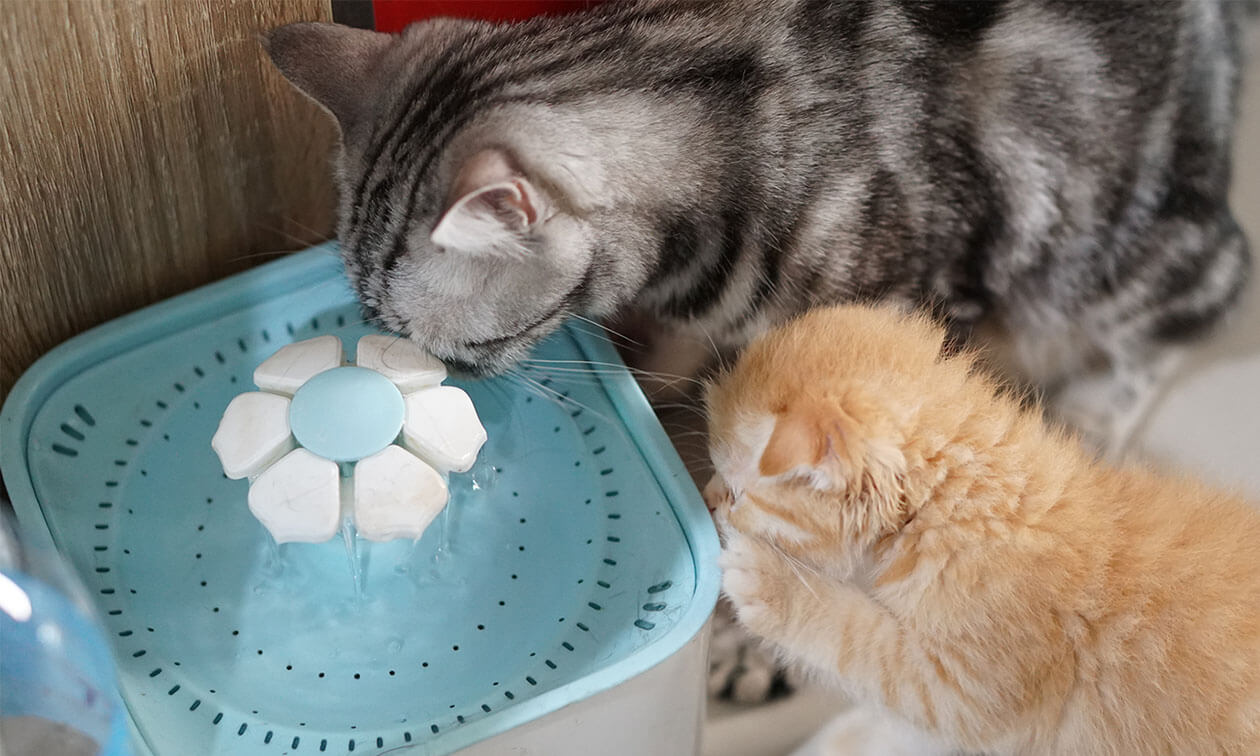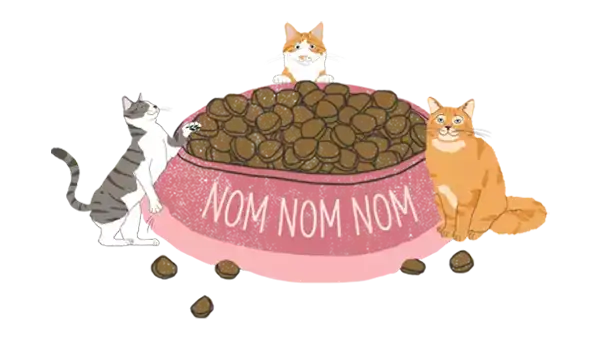It may seem strange to think that you need to encourage your cat to drink water, but it’s true. Our housecats are descended from desert dwellers and drinking water isn't top on their priority list even though it should be, though. Keeping your cat hydrated means better health in general, lowering their chances of cystitis, urinary crystals, kidney issues, and more. Water fountains are a great way to get your cat to drink more water.
Benefits of Using a Pet Water Fountain for Your Cat
Water fountains come with lots of benefits for you and your cat.
- Encouragement to drink more. Cats often prefer moving water. In the wild, drinking from a stream is safer than a puddle of still water full of bacteria and other nasty stuff.
- Improved hydration. Cats are prone to urinary issues and other medical problems due to their heavily concentrated urine and lack of interest in drinking. Infections, cystitis, crystals, urinary blockages, kidney disease, and other medical conditions can be held at bay or improved with lots of water.
- Minimizing messes. Some cats will knock over glasses full of water, play in their water bowls, or even try to drink out of the toilet. A fun fountain with flowing water may keep their water-based attention where it should be.
- Whisker space. Many of us use small or deep bowls for our cat's water. This can be uncomfortable because their whiskers hit the sides of the bowl. Most fountains are shallow and wide, allowing plenty of room for the whiskers.
Are Cat Water Fountains Safe?
Yes! As long as the fountain is well-made, using proper water-proof materials, fountains are safe for pets to drink from. It's always a good idea to check the pump and the cord, especially the part of the cord that stays submerged underwater. With each cleaning, make sure no damage has exposed the wiring, and if your cat is a cord chewer, use a cord protector on the cord outside the fountain unit. If you have any concerns, unplug the fountain when you're not home and provide your cat with another water source during that time.
What To Look For in a Cat Water Fountain
- Style. There are different styles available. Don't be afraid to try a few if your cat doesn't respond to the first. Some fountains bubble up while others use a cascade effect. You can even find options where the water comes out of a spout, just like a faucet. Your cat may prefer heavy streams or light sprinklings of water. Some like to lick the water as it's falling and others want to drink out of the reservoir. You can find a fountain to meet all their instinctual and personal preferences.
- Clean up. Look for an option with easy-to-clean parts. You will need to hand wash certain pieces, like the pump. Corners, grooves, rubber fittings, and the like can be challenging to clean. Keep in mind anything that holds water for extended periods will get that yucky slime, and you need to be able to wash all the nooks and crannies.
- Materials. You can get fountains made from plastic, ceramic, and stainless steel. Plastic can be scratched and scratches can hold bacteria. Stainless steel and ceramic are generally better options and easier to clean.
- Cord length. Using an extension cord with something like this is generally not a great idea. Make sure you get a model (and find a location) that works for your nearest outlet. There are also a few options available with rechargeable pumps — no cord is required.
- Filters. Many cat water fountains come with filters. There are filters that are very small or ones that cover the entire surface. Keep in mind the cost it will take to replace these filters every month or so as you review the different options.
- Sound. You'll be listening to this fountain day in and day out so, keep the noise factor in mind. A spout-style fountain will sound different than a rain, bubble-up, or cascade style.
- Light. Many pet water fountains have lights that attract kitty attention and make the fountain easy to find in the dark.
- Capacity. Think about how often you want to refill the fountain and how much your pets will drink.
- Auto shut-off pump. You won't always be able to see the water level so, it's important to get a fountain with a pump that will shut off if the water level drops too low.
- Spills. Some fountains splash. And some cats make messes. Consider placing a rubber mat under your fountain. Get one with raised edges to contain any spills if the unit is knocked over.
How to Clean a Cat Water Fountain
Cleaning the fountain is vital for your cat's health. All kinds of dust, debris, and hair will fall into the fountain and, since it's holding water regularly, it will get gunky. Imagine if you didn't rinse your cat's water bowl regularly. The slimly ick and hard water that builds up in a standing-water bowl can also happen with a fountain. The movement of the water and the filter should help, but you still have to clean your fountain regularly. A good way to remember when to clean your fountain is to do so every time you have to add water (usually about once a week).
Dishwasher-safe parts of the fountain can be run through the wash cycle and you can hand wash other parts with your usual dishwashing soap. Be sure to pay special attention to corners, crevices, and rubber fittings. You'll also want to wipe down any pump cord that stays submerged and use a long, skinny brush to get inside the pump, hoses, and pipes. Rinse or replace the filter and give the entire pump a good rinse, as well. If your fountain model comes with additional (or different) cleaning instructions, be sure to follow them.
ZPC-02528



